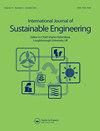Evaluation of suppliers in the tannery industry based on emergy accounting analysis: implications for resource conservation in emerging economies
IF 3.6
Q3 GREEN & SUSTAINABLE SCIENCE & TECHNOLOGY
International Journal of Sustainable Engineering
Pub Date : 2021-09-22
DOI:10.1080/19397038.2021.1982066
引用次数: 5
Abstract
ABSTRACT Emergy Accounting (EMA) has gained attention in recent times as an environmental accounting tool. So far, it has been used for analysis at national and regional levels; however, the EMA has not been utilised in a business performance analysis context. When used in a business context, EMA reveals the interface between industrial activity and the environment. EMA analysis can provide opportunities in measuring the social, economic, and environmental performance of the industry in a sustainability context. Unlike other evaluation methods, which are ‘demand-side’ or ‘user-side’ concerned, EMA analysis is a ‘donor-side’ approach. This research work illustrates the selection of suppliers based on the amount of emergy consumption. Emergy indicators, such as Emergy Yield Ratio (EYR), Emergy Sustainability Index (ESI), Environmental Loading Ratio (ELR), Emergy Self-support Ratio (ESR), Renewability percent (%R), Emergy flow Density (ED), and Emergy Investment Ratio (EIR) are estimated. The results show that there is enough room for improving emergy performance in the tannery industry. The result also highlights a significant variance in the input of indigenous renewable and non-renewable resources and imported resources among the investigated tanneries. Based on the outcomes, the study provides insights on the industries’ consumption of renewable and non-renewable resources.基于能值会计分析的制革行业供应商评估:对新兴经济体资源节约的启示
摘要能值会计作为一种环境会计工具,近年来受到人们的关注。到目前为止,它已被用于国家和区域两级的分析;然而,EMA尚未用于业务绩效分析。当在商业环境中使用时,EMA揭示了工业活动和环境之间的接口。EMA分析可以为在可持续发展背景下衡量行业的社会、经济和环境绩效提供机会。与其他涉及“需求方”或“用户方”的评估方法不同,EMA分析是一种“捐助方”方法。这项研究工作说明了基于能值消耗量的供应商选择。估算了能值指标,如能值产出率(EYR)、能值可持续性指数(ESI)、环境负荷率(ELR)、能源自给率(ESR)、可再生性百分比(%R)、能量流密度(ED)和能值投资率(EIR)。结果表明,制革工业在提高能值性能方面有足够的空间。这一结果还突出表明,在调查的制革厂中,本土可再生和不可再生资源以及进口资源的投入存在显著差异。基于这些结果,该研究提供了有关行业对可再生和不可再生资源消费的见解。
本文章由计算机程序翻译,如有差异,请以英文原文为准。
求助全文
约1分钟内获得全文
求助全文
来源期刊

International Journal of Sustainable Engineering
GREEN & SUSTAINABLE SCIENCE & TECHNOLOGY-
CiteScore
7.70
自引率
0.00%
发文量
19
 求助内容:
求助内容: 应助结果提醒方式:
应助结果提醒方式:


